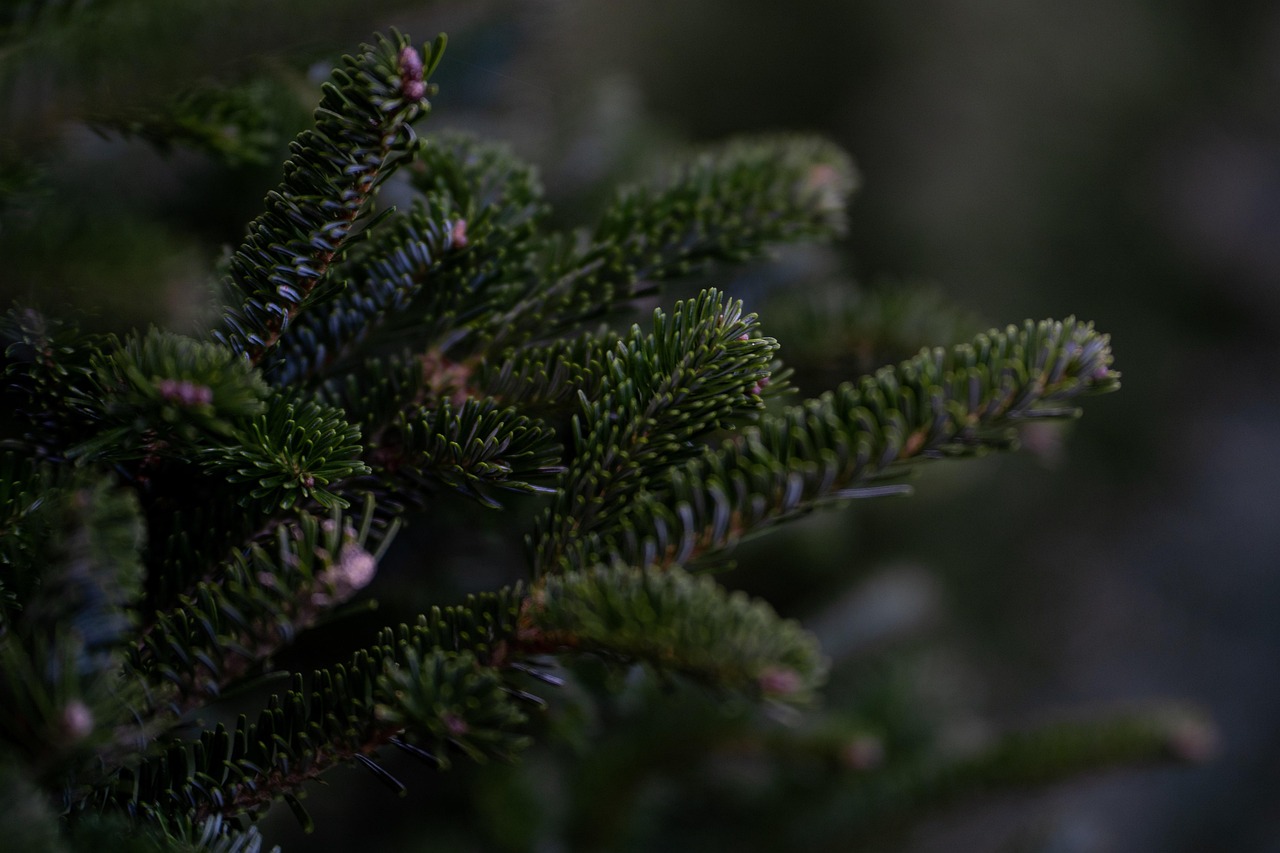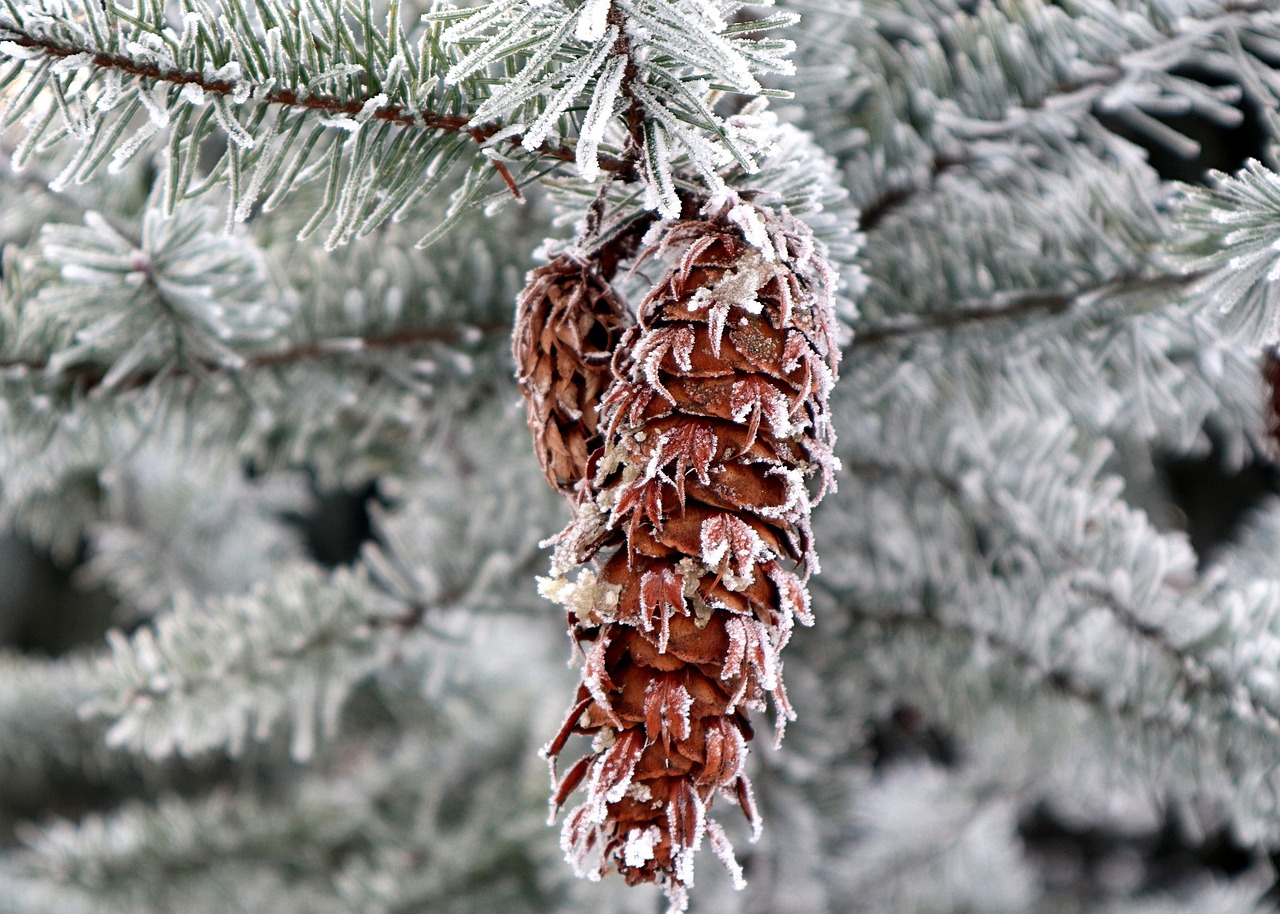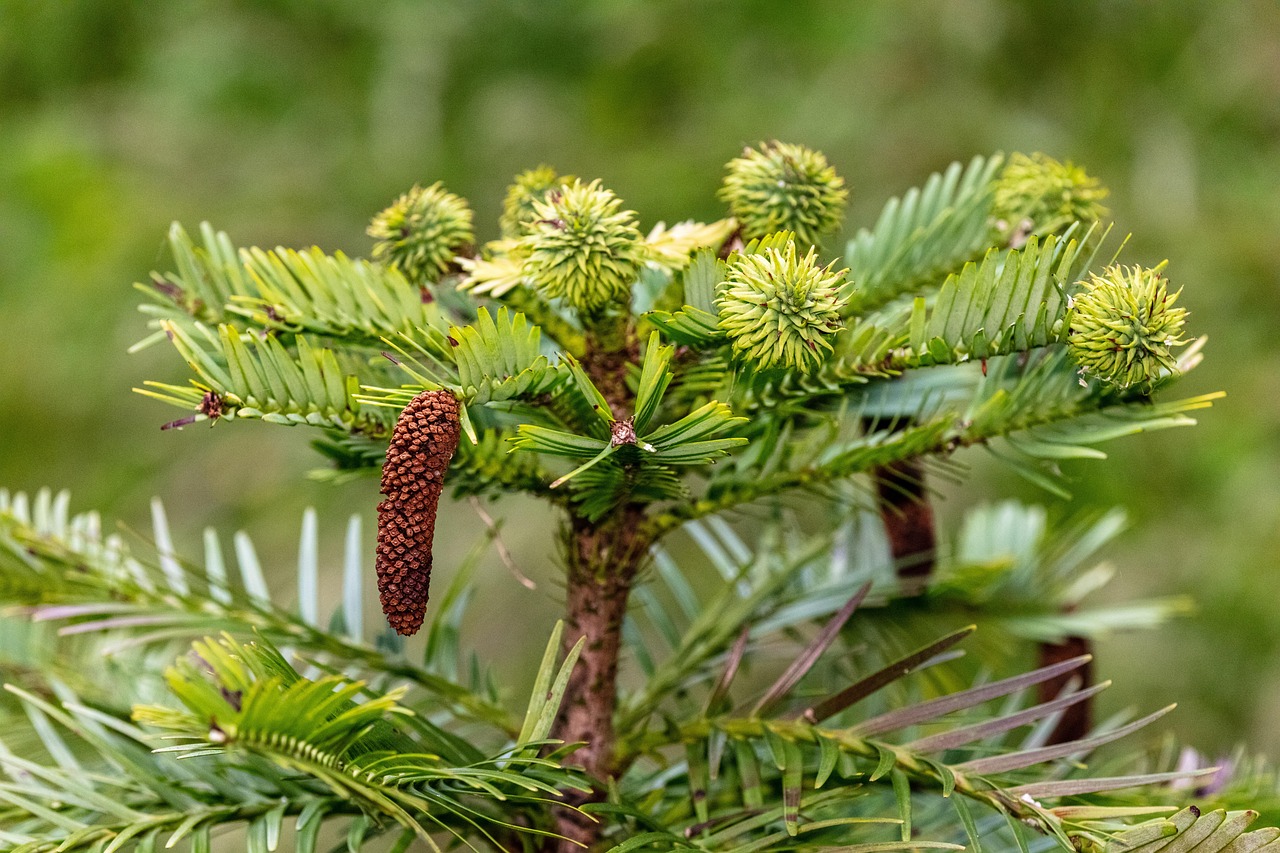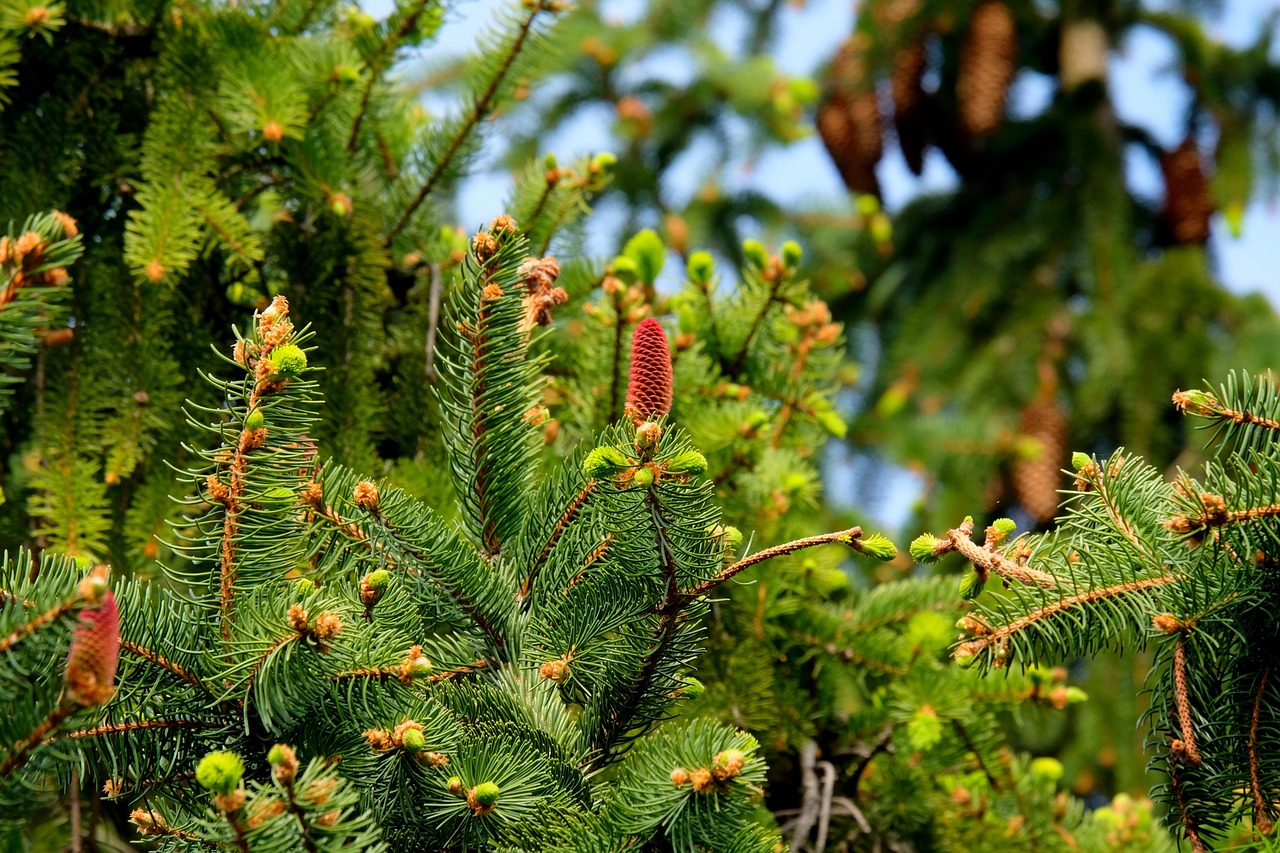Douglas fir (Pseudotsuga menziesii) is primarily distributed along the western coast of North America, ranging from southern British Columbia to northern California. It thrives in a variety of habitats, including mountainous regions, coastal forests, and mixed coniferous woodlands.
Overview of Douglas Fir

The Douglas fir is a significant tree species in North America. It is known for its height, resilience, and adaptability to various climates and terrains. This evergreen tree can grow up to 300 feet tall and is characterized by its thick, furrowed bark and needle-like leaves that can remain on the tree for several years. The wood produced by Douglas fir is highly valued in the lumber industry for its strength and durability.
Understanding the distribution and habitats of the Douglas fir is essential for forest management and conservation efforts. These trees play a crucial role in maintaining ecosystem balance and supporting wildlife. They provide habitat and food for numerous species and contribute to carbon sequestration, helping mitigate climate change.
Native Ranges of Douglas Fir
The native range of Douglas fir primarily spans the western United States and Canada. Below are key points about its distribution:
- The species is predominantly found in the Pacific Northwest, which includes parts of Washington, Oregon, and northern California.
- In Canada, Douglas fir grows in British Columbia, particularly in the coastal regions.
- Its range extends into the Rocky Mountains, reaching as far east as Montana and Wyoming.
Douglas fir’s adaptability allows it to thrive in various environmental conditions. It prefers well-drained soils and can tolerate both dry and moist climates. However, it is most commonly associated with temperate rainforests where it benefits from ample rainfall.
Habitats of Douglas Fir
The habitats of Douglas fir are diverse, reflecting its wide ecological range. These habitats can be classified into several types:
Coastal Forests
In coastal regions, Douglas fir often grows alongside other tree species such as Western red cedar and Sitka spruce. These forests experience high levels of precipitation, which creates a lush undergrowth of ferns and shrubs.
Montane Forests
As one moves inland and upwards in elevation, Douglas fir becomes prevalent in montane forests. Here, it coexists with species like lodgepole pine and grand fir. The climate is cooler and drier than coastal areas, influencing the types of vegetation that flourish alongside Douglas fir.
Mixed Coniferous Woodlands
In mixed coniferous woodlands, Douglas fir often shares space with other conifers, such as ponderosa pine and sugar pine. These areas typically have a rich biodiversity, with various plant and animal species adapted to the unique conditions of this habitat.
| Habitat Type | Characteristics |
|---|---|
| Coastal Forests | High precipitation, rich understory |
| Montane Forests | Cooler temperatures, drier climate |
| Mixed Coniferous Woodlands | Biodiverse, shared with other conifers |
The ability to adapt to various habitats makes Douglas fir a vital part of many ecosystems. Its presence supports not only the health of forests but also the wildlife that depend on these environments for survival.
Ecological Importance of Douglas Fir
The Douglas fir is not only significant for its timber but also plays a crucial ecological role in its native habitats. Its presence influences soil health, supports diverse wildlife, and contributes to overall forest dynamics. Understanding these ecological functions helps highlight the importance of conserving this species.
Soil Health and Erosion Control
Douglas fir trees contribute to soil health in several ways:
- Root Systems: The extensive root systems of Douglas fir help stabilize the soil, reducing erosion. This is particularly important in mountainous areas where soil can be easily washed away by rain or snowmelt.
- Organic Matter: As Douglas firs shed needles and branches, they add organic matter to the soil. This decomposition process enriches the soil with nutrients, promoting a healthy ecosystem.
- Mycorrhizal Associations: Douglas fir forms symbiotic relationships with mycorrhizal fungi. These fungi enhance nutrient uptake for the tree while improving soil structure, which benefits other plants in the vicinity.
Wildlife Habitat
Douglas fir forests provide essential habitats for a wide range of wildlife species. Some key aspects include:
- Biodiversity: Douglas fir stands host numerous species of birds, mammals, and insects. The varied layers of vegetation within these forests create niches for different organisms.
- Nesting Sites: The height of Douglas fir trees offers ideal nesting sites for birds such as owls and woodpeckers. Their cavities also provide shelter for various small mammals.
- Food Sources: The cones produced by Douglas fir are a vital food source for squirrels, birds, and other wildlife. Additionally, the foliage can be browsed by deer and other herbivores.
Growth Conditions and Adaptations
Douglas fir has adapted remarkably well to its native environments. Its growth conditions are influenced by several factors:
Climate Preferences
This tree species thrives in specific climatic conditions:
- Temperature: Douglas fir prefers temperate climates with cool summers and mild winters. It can tolerate a wide range of temperatures but flourishes best in areas with moderate seasonal variation.
- Precipitation: These trees thrive in regions receiving annual rainfall between 30 to 120 inches. They require sufficient moisture but can also withstand periods of drought once established.
Soil Types
The type of soil plays a critical role in the growth of Douglas fir:
- Well-Drained Soils: Douglas fir prefers sandy or loamy soils that provide good drainage. Poorly drained soils can lead to root rot and other health issues for the tree.
- Nutrient-Rich Soil: The presence of organic matter and essential nutrients enhances growth rates. Douglas firs are commonly found in soils rich in nitrogen and phosphorus.
Resilience to Pests and Diseases
While Douglas fir is susceptible to certain pests and diseases, it has developed some resilience mechanisms:
- Pest Resistance: The tree’s thick bark helps protect it from bark beetles and other wood-boring insects.
- Disease Tolerance: Douglas fir can tolerate certain fungal infections better than other conifer species. Regular growth patterns also help mitigate disease spread.
The adaptability of Douglas fir to varying environmental conditions ensures its continued presence across diverse habitats. This resilience is vital not only for the tree’s survival but also for the ecosystems that depend on it.

Human Interaction with Douglas Fir

The relationship between humans and Douglas fir has evolved over centuries. This tree species has been pivotal for various industries, particularly lumber production, and has served as a vital resource for many communities. Understanding this interaction sheds light on the importance of sustainable management practices.
Lumber and Timber Production
Douglas fir is one of the most sought-after timber species in North America. Its wood is prized for several reasons:
- Strength: The wood has a high strength-to-weight ratio, making it ideal for construction purposes, including beams, framing, and flooring.
- Workability: Douglas fir is relatively easy to work with. It can be cut, shaped, and finished with minimal difficulty, making it a favorite among builders and carpenters.
- Durability: The wood is resistant to decay and insects, which enhances its lifespan in various applications.
Due to these attributes, Douglas fir is extensively harvested for commercial use. However, responsible forestry practices are crucial to ensure that its populations remain healthy and sustainable.
Recreational Uses
Douglas fir forests are also significant for recreational activities. Many outdoor enthusiasts enjoy the beauty and serenity these forests provide:
- Hiking and Camping: Trails through Douglas fir forests offer opportunities for hiking and camping, allowing people to connect with nature.
- Wildlife Observation: The rich biodiversity found in Douglas fir habitats attracts birdwatchers and wildlife photographers who seek to capture the unique flora and fauna.
- Educational Programs: Many parks and conservation areas conduct educational programs to teach visitors about the ecology of Douglas fir and its importance to the environment.
Conservation Efforts
As human activities have increased, so have concerns regarding the conservation of Douglas fir populations. Several initiatives focus on preserving these trees and their habitats:
Sustainable Forestry Practices
Implementing sustainable forestry practices is essential for maintaining healthy Douglas fir populations. Key practices include:
- Selective Logging: Rather than clear-cutting entire areas, selective logging allows for the harvesting of mature trees while preserving younger ones and maintaining overall forest health.
- Reforestation: After harvesting, replanting Douglas fir saplings helps restore forests and ensures that future generations can benefit from these trees.
- Monitoring and Research: Ongoing research into the health of Douglas fir populations helps identify threats such as pests and diseases, enabling proactive management strategies.
Protected Areas and Reserves
Establishing protected areas and reserves is another essential component of conservation efforts. These areas ensure that Douglas fir forests are preserved in their natural state:
- National Parks: Many national parks contain significant Douglas fir populations, providing a refuge for these trees while allowing for public enjoyment and education.
- Wildlife Refuge Areas: Designated wildlife refuges help protect not only Douglas fir but also the diverse species that rely on these forests for habitat.
Cultural Significance
The Douglas fir holds cultural significance for various Indigenous communities in North America. It has been used for generations in traditional practices:
- Building Materials: Indigenous peoples have utilized Douglas fir wood for constructing shelters and canoes due to its strength.
- Cultural Ceremonies: The tree plays a role in various cultural ceremonies and has been used in rituals for its spiritual significance.
The recognition of Douglas fir’s cultural importance reinforces the need for conservation efforts that respect Indigenous rights and knowledge systems. As we navigate challenges related to resource management, it is crucial to integrate traditional ecological knowledge with modern conservation practices.
Threats to Douglas Fir Populations

Despite its resilience and importance, Douglas fir faces several threats that could jeopardize its populations and the ecosystems that depend on it. Addressing these challenges is critical to ensuring the sustainability of this vital species.
Climate Change
Climate change poses significant risks to Douglas fir trees. Key impacts include:
- Temperature Increases: Rising temperatures can alter the growth patterns of Douglas fir and affect its range. Warmer conditions may lead to stress and susceptibility to pests.
- Altered Precipitation Patterns: Changes in rainfall can lead to drought conditions, impacting the health of Douglas fir forests and increasing the likelihood of wildfires.
- Pest Outbreaks: Climate change can enhance the proliferation of pests like bark beetles, which thrive in warmer conditions, resulting in increased mortality rates among Douglas fir trees.
Deforestation and Land Use Changes
Human activities such as deforestation and urban development threaten Douglas fir habitats. The consequences include:
- Habitat Loss: Expansion of agriculture and urban areas often leads to the destruction of Douglas fir forests, diminishing their native ranges.
- Fragmentation: Even when forests are not completely cleared, fragmentation can isolate tree populations, making it difficult for wildlife to thrive and for trees to reproduce.
Pests and Diseases
While Douglas fir has some natural resistance, it is still vulnerable to various pests and diseases that can significantly impact its health:
- Bark Beetles: These insects can devastate entire stands of Douglas fir, particularly during drought years when trees are stressed.
- Root Rot: Fungal infections like root rot can severely affect tree health, particularly in poorly drained soils where moisture accumulates.
Future Directions for Conservation
To ensure the survival of Douglas fir populations and their habitats, several strategies need to be prioritized:
- Enhanced Research: Continued research into the ecology and biology of Douglas fir will provide insights necessary for effective management strategies.
- Community Engagement: Involving local communities in conservation efforts ensures that sustainable practices are upheld and respected. Education programs can raise awareness about the importance of this tree species.
- Policy Advocacy: Advocating for policies that protect forests from deforestation and promote sustainable land use is vital for the long-term health of Douglas fir forests.
Conclusion
The Douglas fir stands as a testament to the resilience of nature and the intricate balance within ecosystems. Its wide distribution across North America, combined with its ecological, cultural, and economic significance, highlights the need for comprehensive conservation efforts. By understanding the threats it faces—ranging from climate change to habitat loss—stakeholders can take informed actions to protect this essential tree species. Sustainable forestry practices, community engagement, and policy advocacy are crucial components in safeguarding the future of Douglas fir. As we move forward, integrating traditional ecological knowledge with modern science will play a pivotal role in ensuring that Douglas fir continues to thrive in its native habitats for generations to come.
